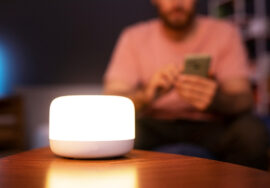
Blue Zone Diets Meets Wearable Tech: Tracking Your Way to Long Life
Introduction: Tradition Meets Innovation in Fitness
Longevity has fascinated humanity for centuries, and science is now helping uncover the secrets behind long life. The concept of Blue Zones—regions of the world where people live significantly longer and healthier lives—has inspired millions to rethink diet and lifestyle. Meanwhile, wearable technology is reshaping how we monitor and improve our health. The fusion of these two worlds, the ancient wisdom of Blue Zone diets and modern fitness tracking, offers a powerful strategy for anyone seeking vitality and resilience in today’s fast-paced environment.
What Are Blue Zones?
Blue Zones are areas identified by researchers where people regularly live past 90 or even 100 years. These regions include Okinawa (Japan), Sardinia (Italy), Nicoya (Costa Rica), Ikaria (Greece), and Loma Linda (California, USA). While genetics play a role, lifestyle factors—especially diet, movement, and community—are at the heart of their longevity. For fitness and overall wellness, these regions demonstrate that consistency and simplicity often outperform extreme measures.
The Blue Zone Diet Principles
The eating habits in Blue Zones share several key principles:
- Plant-forward diets: Vegetables, legumes, and whole grains dominate daily meals.
- Limited meat consumption: Meat is eaten sparingly, often just a few times per month.
- Healthy fats: Olive oil, nuts, and seeds provide essential nutrients.
- Moderation: Meals are portioned sensibly, often guided by traditions like Okinawa’s Hara Hachi Bu (eating until 80% full).
- Minimal processed foods: Whole, locally sourced ingredients are preferred.
These simple dietary patterns reduce inflammation, improve digestion, and support long-term fitness and heart health.
Wearable Tech: A Modern Fitness Partner
Wearables—such as fitness trackers, smartwatches, and health-monitoring devices—offer real-time data that helps users understand their daily habits. These tools track steps, calories burned, heart rate, sleep cycles, and even stress levels. By turning health into measurable insights, wearables encourage accountability and consistency. For anyone aspiring to adopt a Blue Zone-inspired lifestyle, wearable tech acts as a guide, making invisible health patterns visible.
How Blue Zone Diets and Wearable Tech Work Together
Combining Blue Zone nutrition with wearable technology creates a synergy between tradition and innovation. Here’s how:
- Tracking nutrition impact: Wearables help monitor activity levels and sleep quality, showing how dietary choices influence energy and recovery.
- Encouraging mindful eating: Recording meals or monitoring caloric intake ensures portion control aligns with Blue Zone moderation practices.
- Reinforcing daily movement: Blue Zone residents walk, garden, and stay active naturally; wearables remind users to keep moving throughout the day.
- Promoting consistency: Data-driven feedback helps users turn healthy habits into a sustainable fitness routine.
By merging timeless eating habits with real-time insights, individuals can personalize their path toward longevity.
Fitness Lessons from Blue Zones
Beyond diet, Blue Zone communities teach important lessons about fitness:
- Natural movement: Daily activity is woven into life—walking, farming, and housework replace structured gym sessions.
- Low-intensity endurance: Long walks and physically engaging tasks build endurance without strain.
- Community exercise: Group activities, from dancing to gardening, make movement enjoyable.
- Stress management: Rituals like prayer, napping, and socializing keep stress levels low.
Wearables can help replicate these lessons by encouraging steps, tracking heart rate zones, and even reminding users to pause for stress relief.
The Role of Community and Connection
One of the overlooked aspects of Blue Zones is the power of social connection. Families eat together, communities celebrate traditions, and friendships provide emotional support. Wearable technology now includes features that promote social accountability—step challenges, shared health goals, and group progress tracking. This blend of cultural wisdom and modern tools ensures that fitness is not only personal but also social and rewarding.
Expert Insights on Longevity and Tracking
Nutritionists emphasize that adopting Blue Zone diets reduces chronic disease risks, while fitness experts highlight the importance of steady movement over extreme workouts. Health researchers note that wearable data reinforces these principles, helping individuals build awareness and discipline. Together, these tools encourage a shift from short-term fitness trends to long-term well being.
Lifestyle Integration: Practical Tips
Adopting both Blue Zone diets and wearable technology doesn’t require a complete overhaul. Start with small steps:
- Replace processed snacks with nuts or fruit.
- Schedule device reminders for short walking breaks throughout the day.
- Track sleep patterns and adjust evening routines for better rest.
- Join social groups—either in person or virtually—to stay active and connected.
- Celebrate progress with family meals inspired by Blue Zone recipes.
When implemented consistently, these habits form a lifestyle where fitness, nutrition, and wellness flow naturally together.
Addressing Common Concerns
Some worry that wearable tech promotes obsession with numbers. The key is balance—using data as a guide, not as pressure. Similarly, adopting Blue Zone principles doesn’t mean abandoning favorite foods; it means shifting focus toward plant-based, whole-food meals while practicing moderation. Both approaches emphasize sustainability, not perfection.
Conclusion: A Long Life Through Balance
The wisdom of Blue Zone diets and the precision of wearable technology create a powerful roadmap for health, fitness, and longevity. By combining plant-based nutrition, mindful eating, and natural movement with data-driven tracking, families and individuals can embrace habits that support a long, fulfilling life. This fusion of tradition and innovation proves that the secret to thriving isn’t just in ancient wisdom or modern gadgets—it’s in the balance between the two.





